2020 MXA MIDSIZE SHOOTOUT: TWO MIDDLEWEIGHTS & ONE WELTERWEIGHT
The whole idea of doing a midsize motocross shootout seems ludicrous. After all, there are only two readily available, midsize, four-stroke motocross bikes on American showroom floors (when midsize is defined as exactly midway between 250cc and 450cc). Simple math reveals that the midway point is 350cc. The two 350cc motocross bikes are generated from the same Mattighofen, Austria, factory—the KTM 350SXF and the Husqvarna FC350.
But what if the MXA wrecking crew expanded the midsize definition from midway between 250cc and 450cc to readily available motocross bikes above 250cc and below 400cc? If we used those parameters, we could double our sample size. Both Sherco and TM produce bikes that fit in this category, but the Sherco 300SCF enduro bike is disqualified from this shootout because the Spanish-founded company does not make a motocross version of its 300SCF. That cuts the number of midsize four-stroke motocross bikes from four to three. They are the 2020 KTM 350SXF, Husqvarna FC350 and TM 300FI-MX.
2020 KTM 350SXF
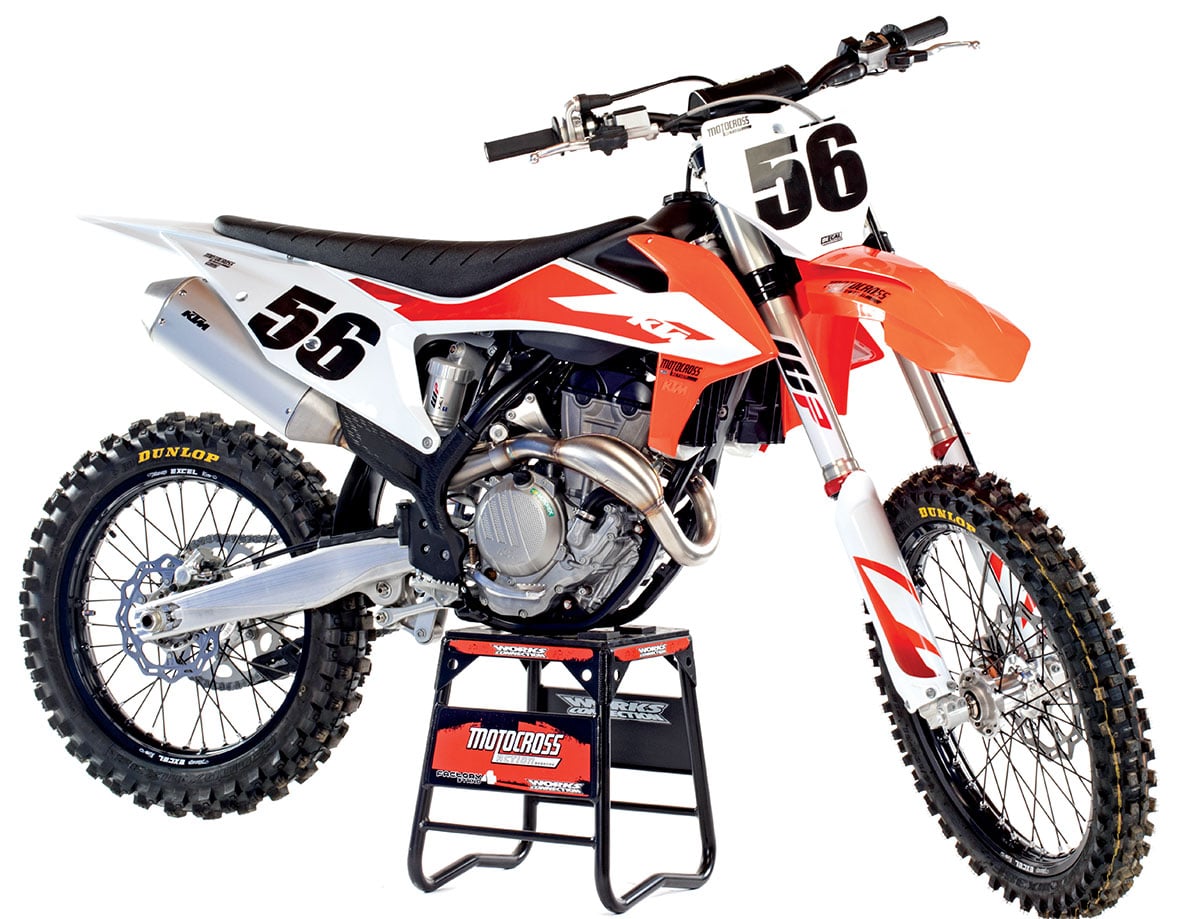 No other production bike in motocross history has been so noticeably improved from year to year as the KTM 350SXF. This bike is not a traditional motocross bike. It has only been around for nine model years, and since its rather mundane introduction in 2011, it has gained steam, performance and followers every year. The technological leaps that the 350SXF has made since it was introduced in 2011 (when it wasn’t a very good bike) are dazzling. The 2020 model makes 8 horsepower more than the original 2011 KTM 350SXF. KTM had so much faith in the 350 format that it wanted to drop the 450SXF from its product line and put all its marbles on the 350SXF back in 2012.
No other production bike in motocross history has been so noticeably improved from year to year as the KTM 350SXF. This bike is not a traditional motocross bike. It has only been around for nine model years, and since its rather mundane introduction in 2011, it has gained steam, performance and followers every year. The technological leaps that the 350SXF has made since it was introduced in 2011 (when it wasn’t a very good bike) are dazzling. The 2020 model makes 8 horsepower more than the original 2011 KTM 350SXF. KTM had so much faith in the 350 format that it wanted to drop the 450SXF from its product line and put all its marbles on the 350SXF back in 2012.
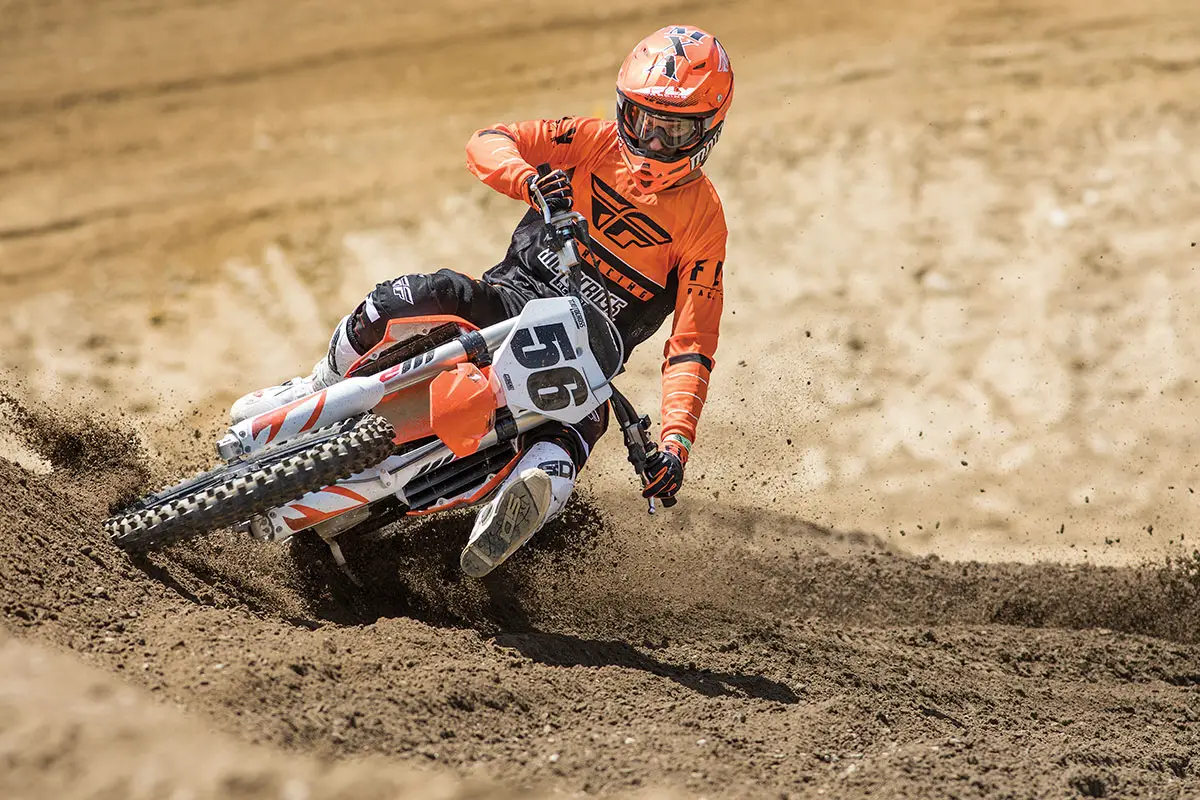
Luckily, Roger DeCoster had joined KTM in 2011 and told KTM management in no uncertain terms that without a full-race 450cc motocross bike, KTM would never be able to get a top-of-the-line AMA star to sign to race for KTM. And by that Roger meant that Ryan Dungey would not sign with KTM for 2012 if he had to race a 350. You can thank Roger for saving the KTM 450SXF from the boneyard. But, you can thank local Vet motocross racers across the country, along with KTM’s constant improvements, for making the KTM 350SXF a massive sales success. Vet racers looking for a race bike that was more powerful than a 250 but not as powerful as a 450 made the 350SXF their go-to bike.
INTERESTING 2020 KTM 350SXF FACTS
(1) Powerband. Although few riders recognize it, largely because the KTM 350SXF makes its peak power a hair below 12,000 rpm, the front end of the 350SXF power curve is very good. In fact, from 7000 rpm to 9500 rpm, the KTM gains 15 horsepower in less than a 2500 rpm range. Overall, the 350SXF is a high-rpm rocket ship that demands the rider be 100-percent committed to bleeding the revs dry.
(2) Weight. The 2020 KTM 350SXF weighs 222 pounds, and while that is only 1 pound less than the KTM 450SXF, it is 4 pounds less than a Yamaha YZ250F and 5 pounds less than a Honda CRF250. As for its close proximity to the 450SXF’s 223-pound weight, the lighter rotating mass of the 350SXF engine cranks, cams, piston and drivetrain make it feel much lighter than the 1-pound difference.
(3) Handling. After decades of a hinged-feeling chassis, KTM found the magic numbers 10 years ago. The combination of the 350SXF’s progressive powerband, chromoly tubing, spot-on head angle and light weight produces awe-inspiring handling. It is right as rain.

(4) Suspension. KTM stiffened the frame in 2019 to make the chassis more accurate, which pleased Pros, but since Pros don’t race 350SXFs, who cares how pleased they are? Luckily, the adjustability of the AER air forks and very-good WP rear shock enabled racers to find non-recommended settings that softened up the feel of the chassis. The best trait of air forks is that they are infinitely adjustable—for riders who take the time to learn how to live with them. They are not Yamaha SSS perfect, but don’t suffer from the soft/hard issues of the KX450, KX250, RM-Z250, CRF250 and CRF450.
(5) Clutch. You might—and we say that with skepticism—be able to make the clutch on a Japanese bike as durable, accurate, self-adjusting and foolproof as a KTM diaphragm clutch, but it would cost at least $1000.
(6) Ergos. Once considered a “European brand” in terms of layout, KTM has put that criticism behind it with sleek, slim and narrow ergonomics. KTM’s American-based test program has made the KTM 350SXF more Yankee than Austrian.
2020 HUSQVARNA FC350
Husqvarna has the longest-running history as a motorcycle manufacturer, but the current line of Austrian-built Husqvarnas is barely six years old. Since its glory days in the 1960s and early ’70s, Husqvarna has changed ownership many times. The Swedes sold it to Cagiva in 1987, then BMW took it over in 2007, and finally KTM bought it in 2013. Thus, the first of the current generation of Husqvarnas shares no genes with any previous Husky motocross bikes, which date back to 1960. After buying Husky from BMW in 2013, it took KTM one model year to get some platform-shared Husky models on the showroom floors; however, the FC350 was delayed an additional year, making its USA debut as a 2015 model.
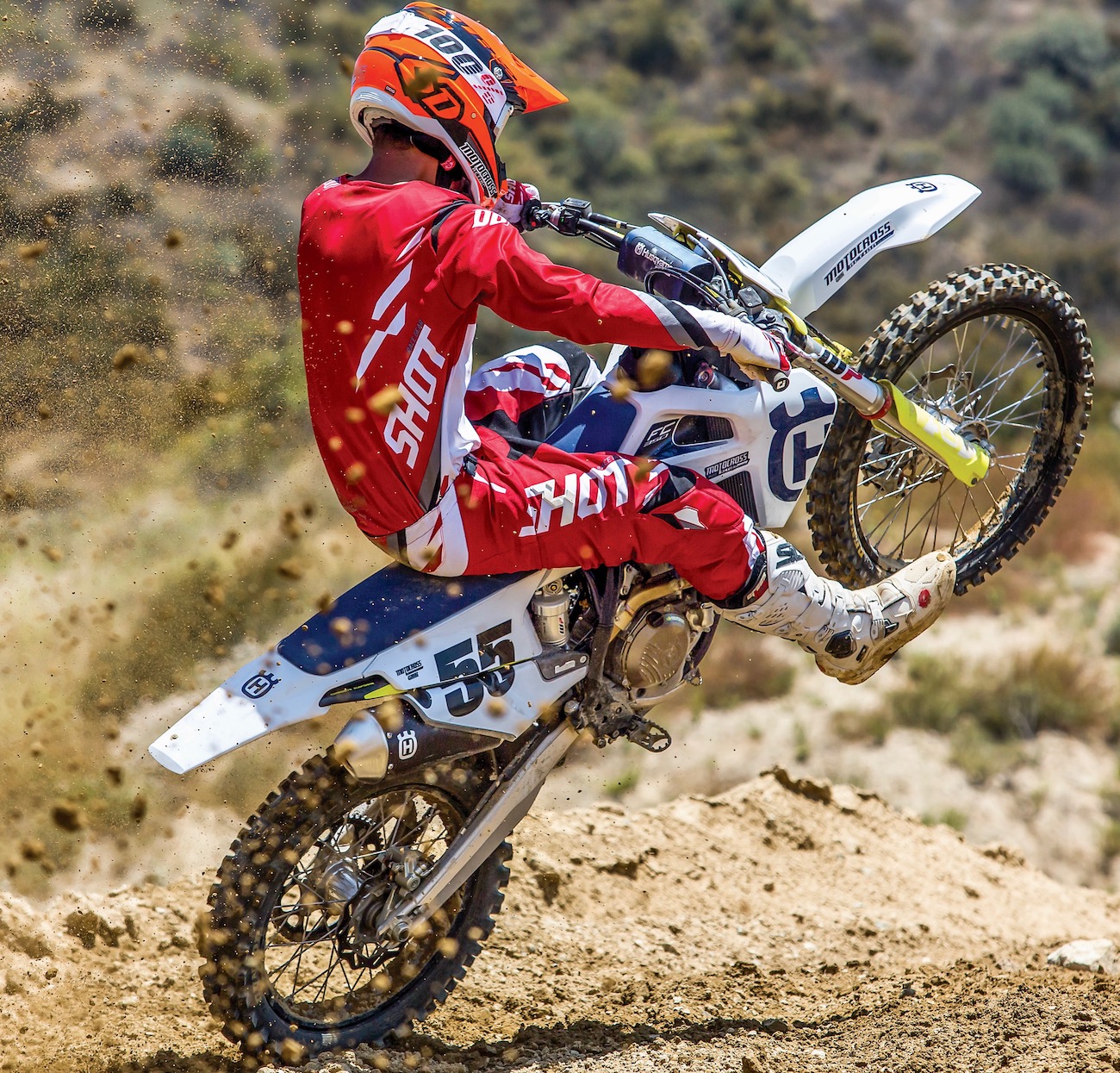
The 2015 Husqvarna FC350 was noteworthy for three reasons: First, although a KTM clone, it differed in its plastic bodywork, most notably the molded airbox/subframe KTM co-opted from Husaberg, which KTM dropped after buying Husqvarna. Second, most MXA test riders liked the suppler feel of the resilient plastic subframe compared to the KTM’s traditional aluminum tube subframe. Third, 2015 was the first year MXA pointed out that the molded Husqvarna airbox, did not breathe. In 2015 we said, “The Husky airbox is buttoned up tight. A loaf of bread would stay fresh in Husky’s airbox for a week. Less air means less throttle response at low rpm.”
INTERESTING 2020 HUSQVARNA FC350 FACTS
(1) Suspension. After Mattighofen stiffened the KTM and Husqvarna frames in 2019 to make the chassis more accurate, Husqvarna’s test engineers revolted for 2020. Feeling that KTM’s suspension setup was too stiff and seeking to appeal more to its base of Vet racers, Husky had WP soften the compression shim stack, eliminate free bleed in the mid-valve, raise the oil height by 20cc and up the recommended air pressure by 3 psi (from 152 psi to 155 psi). With these mods, Husqvarna succeeded in lessening mid-stroke harshness, smoothing out the action of the fork, delivering a much more responsive feel, improving front tire contact and increasing overall comfort.

(2) Powerband. From a mechanical perspective, the 2020 Husky FC350 has almost identical numbers to the 2020 KTM 350SXF engine; however, from an in-the-saddle perspective, the 2020 FC350 has a more pleasant power delivery. It feels a little more hooked up, because the throttle response is muted. You might ask, “If the two engines are identical, how can the Husky engine feel different from the KTM engine?” Obviously, the restrictive plastic airbox mutes the power delivery, while a restrictive ice-cream-cone-style baffle in the muffler kills throttle response at low rpm (you can’t see the baffle because it is down in the middle of the muffler’s perf core).
(3) Weight. The 2020 FC350 is 1 pound heavier than the KTM 350SXF, thanks to the airbox, thicker brake rotors, new plastic and baffled muffler.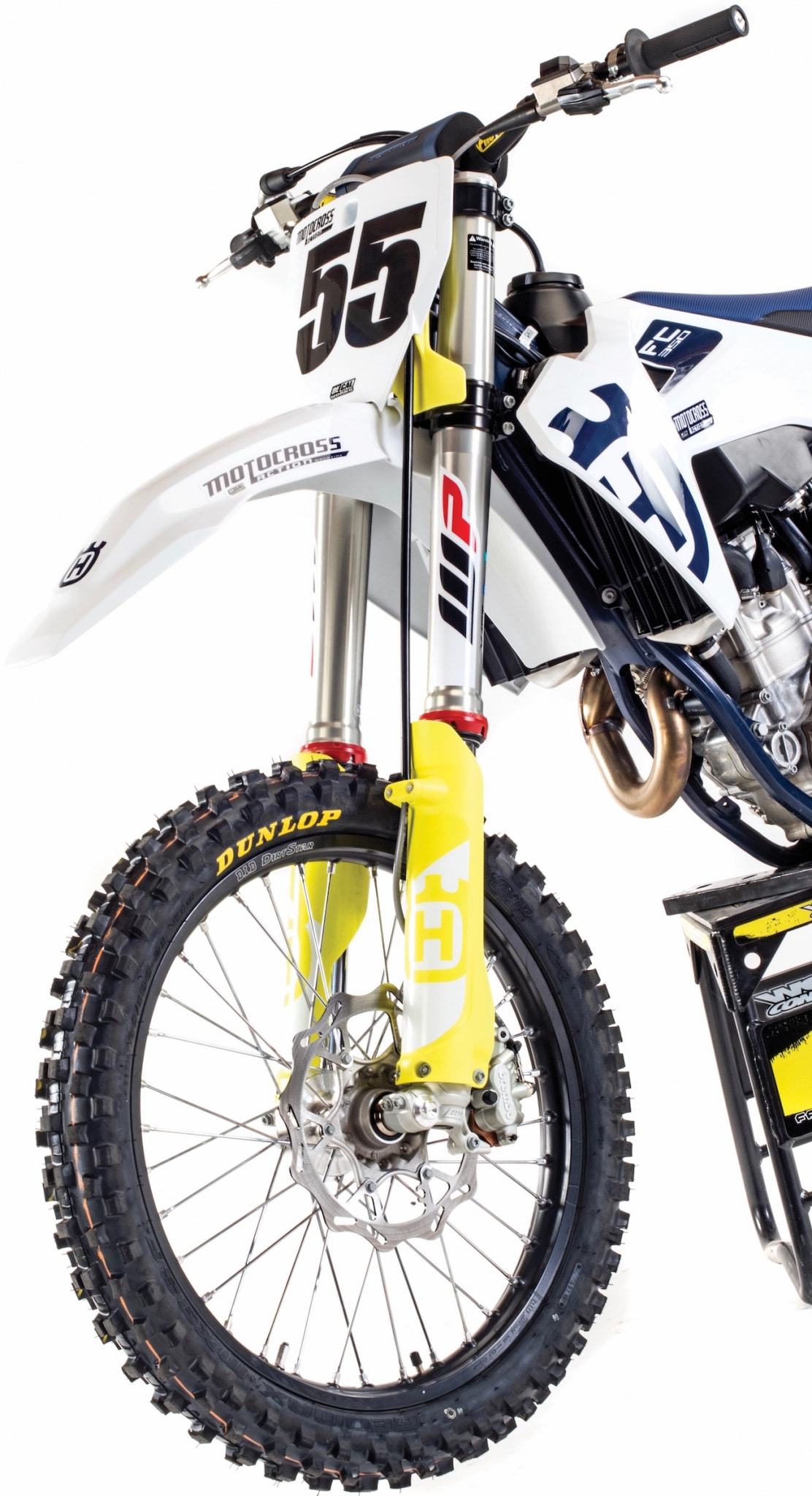
(4) Handling. Even though the Austrian engineers stiffened the plastic subframe for 2020, the more usable powerband, perfectly spec’ed forks, plusher ProTaper handlebars and lighter 42 N/mm shock spring (compared to the KTM 350SXF’s 45 N/mm spring) make the 2020 Husqvarna FC350 into a test rider favorite in 350cc balloting.
(5) Miscellaneous. Where KTM and Husqvarna have pulled away from their red, green, blue and yellow competition in the 350 class is that Honda, Kawasaki, Yamaha and Suzuki don’t make 350cc midsize motocross bikes. They also can’t compete with the Austrian duo’s DS clutch, Brembo brakes, Pankl gearbox, unlimited rev and light weight.
(6) Maps. MXA test riders liked the two maps, traction control and launch control on the Husqvarna. For 2020, racers are finally learning how to work with the available electronic suite. The biggest trend for 2020 is running traction control with the two existing map choices to expand the suite to four possible settings. Many riders have found that they can use traction control instead of launch control on starts.
2020 TM 300FI-MX
We have to wonder why TM built a 300 instead of a 350. The answer is interesting. TM is a very small motorcycle manufacturer. Total production is only 1200 units a year. So, when TM decided to build a midsize four-stroke to slot between the 250FI-MX and the 450FI-MX, there were two paths available. TM could build a 350cc four-stroke that would be a smaller version of its 450, or TM could build a 300cc four-stroke that would be a bigger version of its 250. Several factors entered into TM’s final decision. (1) If TM went the 350 route, it would be late to the party and have to face the KTM and Husqvarna 350s already on the showroom floors.
(2) Given the success of its TM 300MX two-stroke, TM recognized that there was a ready-made market for a more powerful bike that maintained the traits of a traditional 250cc four-stroke. The 300 route not only gave TM a unique machine, but it would be the first and only brand catering to this market. Remember, TM’s goal was to build a more powerful 250, while Austria’s goal was to build a less powerful 450. (3) If you think the TM 300FI-MX is just a bored-out TM 250FI-MX, you could not be more wrong. While the TM 250FI-MX and 300FI-MX engines look identical, they don’t share pistons, rings, connecting rods, cranks, cylinders, heads, transmissions or bore-and-stroke. The only TM 250FI-MX part that crosses over to the TM 300FI-MX is the hydraulic clutch.
INTERESTING 2020 TM 300FI-MX FACTS
(1) Gearbox. TM offers both five- and six-speed gearboxes for the 300FI-MX, but the American importer only brings in the six-speeder. Why? Because the five-speed and six-speed gearboxes share the same first, second, third, fourth and fifth gears (the sixth gear is tacked on for more top speed). For motocross use, you would never even know the TM 300FI-MX had a sixth gear, but it’s there if you want to go trail riding.
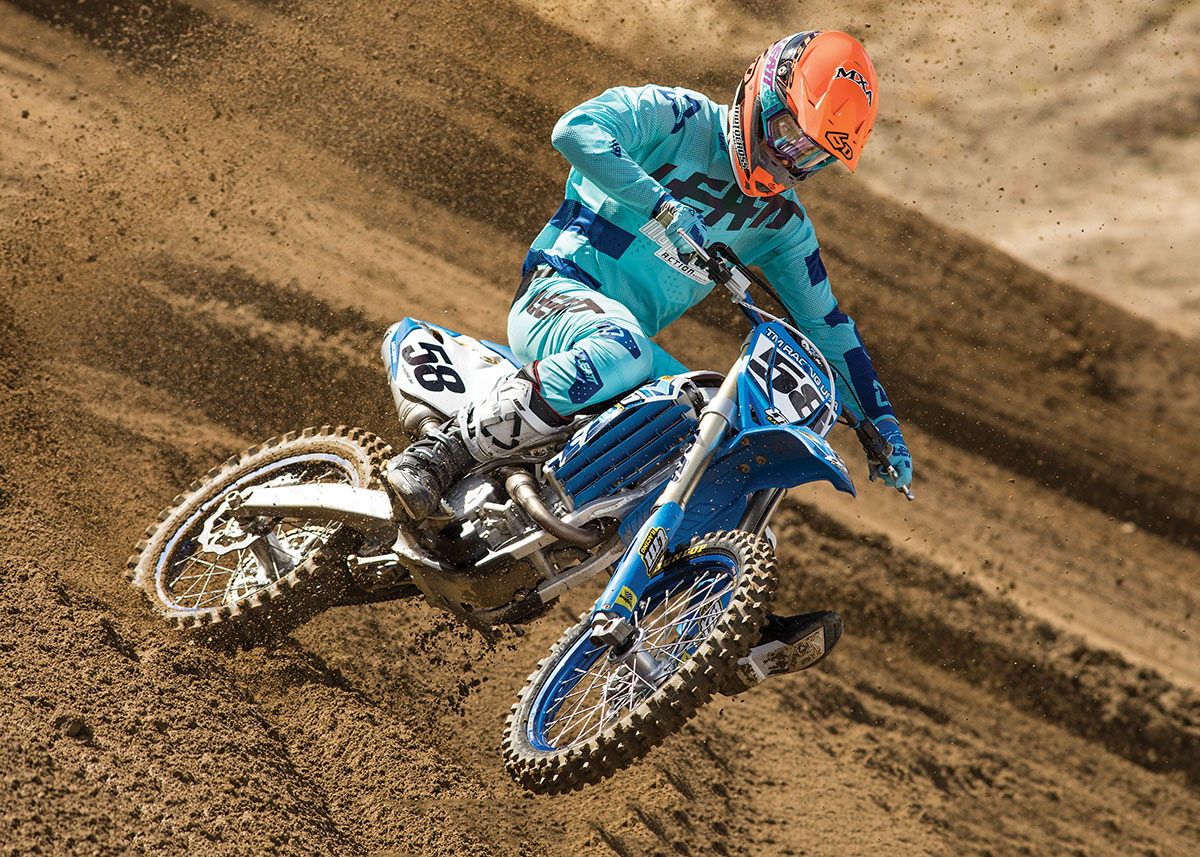
(2) Powertrain. TM makes its own fuel-injection throttle body and mounts it behind the head at a 45-degree downdraft angle that maximizes fuel misting and air velocity. The fuel is held low in the chassis, where the airbox would normally be, and the airbox is where the gas tank should be. The swap makes sense, because the lightweight Twin Air filter is high on the chassis, while the 10 pounds of gas is centralized below the seat. The air filter can be accessed by removing one screw, while the gas cap is mounted on the right side of the bike like on a Formula 1 car.
(3) Handling. We love how the 2020 TM 300FI-MX handles. Over the years, MXA test riders have had bad experiences with typical Italian tracks and Italian chassis. The Italians never embraced front-end turning; instead, they favored bikes that had to be backed into corners tail-happy and throttle-pegged. Not so with the 2020 TM 300FI-MX. And that is what makes the latest generation of TMs so appealing. The front end sticks to the ground like glue, and the TMs carve better than most Japanese bikes.

(4) Electric starting. The 2020 TM 300FI-MX comes with both an electric starter and a kick starter. Unfortunately, this combo adds about 5 pounds that the TM could ill-afford compared to the 350SXF and FC350. But, the Italians went with the better-safe-than-sorry theory.
(5) Miscellaneous. TM’s front brake is a thing of beauty, with its 170mm front rotor and Brembo power; however, the rear brake is very touchy. The blue rims make the TM look like a Yamaha (TM went blue years before Yamaha got the idea). We love the Formula 1 gas cap location, but it is hard to get off and even harder to get back on without cross threading it. TM’s front-mounted airbox is much better than the Yamaha’s, plus TM didn’t turn the cylinder around backwards to do it.
(6) Suspension. TMs come with Kayaba SSS forks, and unlike the other brands that have jumped on the Kayaba bandwagon as of late, the TM’s KYB units actually feel as good as the Yamaha forks. The TM-built rear shock setup wasn’t designed for lightweights; it worked well for riders above 175 pounds. We couldn’t get enough race sag for riders below that. It would need a spring change for lighter riders.

FINAL SHOWDOWN: 2020 KTM 350SXF VS. HUSKY FC350 VS. TM 300FI-MX
The MXA wrecking crew lived, raced, adjusted and fiddled with the three machines in “MXA’s 2020 Midsize Shootout” until we felt we knew them inside and out. It wasn’t an easy shootout, given that two of the bikes verge on being twins, while the third one was the counterpoint to the first two. Only one of them could win, was it the KTM, Husqvarna or TM?
Q: WHICH MAKES THE MOST HORSEPOWER, THE TM, HUSKY OR KTM?
A: This was not a category that the TM 300FI-MX had a ghost of a chance of winning. At 291.3cc, the TM was giving up 58.4cc to the 349.7cc Husky and KTM. At peak horsepower, the KTM is making 54.6 horsepower at 11,800 rpm, while the TM is producing 44.42 horsepower at 11,600 rpm. That is 10 horsepower off the pace for the TM; however, if you compared the 2020 TM 300FI-MX to the 2020 KTM 250SXF, the TM is an average of 6 horsepower better at every step on the rpm range from 7000 rpm to 12,000. At peak, the TM beats the KTM 250SXF by 2 horsepower (largely because the TM’s big-bore engine falls off after 11,600 rpm, which allows the KTM 250SXF to gain back some power as its rev limiter is at 13,000 rpm). In short, the TM 300FI-MX gives up 10 horses on average to purebred 350cc engines but is 6 horses better than the leading 250 engines in the class.
The battle between the Husky FC350 and KTM 350SXF is almost a dead heat. The KTM’s 54.61 horses and Husky’s 54.41 horses are pretty spectacular numbers (both Austrian 350s make more peak horsepower than the 2020 Suzuki RM-Z450’s 54.39 horses). But, this isn’t as close of a horse race as you might think. Remember the muffled airbox and restricted muffler (or is that the restricted airbox and muffled muffler) on the Husqvarna? Those two technical choices make the Husqvarna slower revving and milder hitting than the KTM 350SXF’s unmuffled airbox and unrestricted muffler. If you are looking for the hardest-hitting and quickest-revving 350SXF, the KTM is your bike.
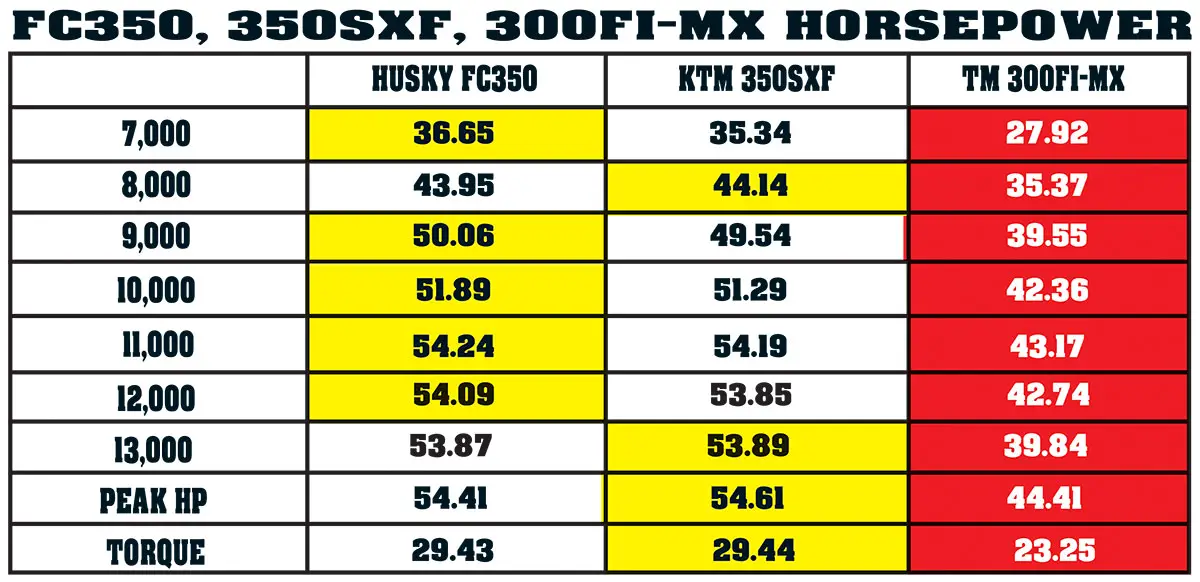
Q: WHAT ARE THE POWERBANDS LIKE?
A: All three of these bike are “don’t shift” machines. They do their best work if revved to 13,000 rpm. The KTM and Husqvarna have linear-style powerbands that progressively make more and more power as they rev. For example, if you shift a KTM or Husqvarna at 10,000 rpm instead of revving it to 12,000 rpm, you will be giving up almost 5 horsepower. There are no big dips, bogs or surges of energy in the Husqvarna and KTM powerbands. They produce a crescendo of power that comes to an end when the rev limiter kicks in. And, you can make the Husqvarna regain the throttle response it gave up by drilling holes in the airbox and installing a slip-on aftermarket muffler (sans the ice-cream cone baffle).
By comparison, the TM 300FI-MX doesn’t have as much low-end as its 350cc opponents. But, why would it? It has less displacement. MXA test riders reported that the TM powerband had a torquey, metered power, but uninspiring delivery off the bottom and into the midrange. When you first ride it, it feels slow and sluggish down low, but then, after the midrange, it turns into a runaway meteor. The TM 300FI-MX is for riders who are willing to rev the bike to the moon and only use the low-to-mid power for the technical sections. Given that it has a 250-style powerband, with up to 6 more horsepower than a normal 250 four-stroke across the meat of the power curve, it feels slower down low than it really is.
Q: WHICH ONE HAS THE MOST TORQUE?
A: The easy answer is that KTM and Husky are in a gnat’s-hair tie at 29.44 pounds-feet to 29.43 pounds-feet for the KTM and Husqvarna respectively. The TM makes a very respectable 23.25 pounds-feet, especially when compared to the KTM 250SXF’s 20.47 pounds-feet.
Q: WHICH ONE HAS THE BEST FORKS?
A: The TM 300FI-MX’s Kayaba SSS forks are the most surprising fork of the trio. The fork spring rate was good for Vet riders and we found great clicker settings for riders of all sizes. Only a faster or bigger rider would feel the need to go stiffer. For all intents and purposes, these forks feel like Yamaha forks.
The KTM and Husqvarna both have WP Xact air forks but with drastically different setups. Husqvarna’s decision to dial-in the suspension for its target audience, as opposed to catering to Pro riders, produced a noticeable improvement in overall feel. If you are a Vet rider, you will love the Husqvarna forks; however, if you are fast, you will find them too soft. The KTM 350SXF’s WP Xact air forks got a number of updates for 2020. The changes were designed to compensate for the frame stiffness issue, not to focus on Vet riders.
Q: WHICH ONE HAS THE BEST SHOCK?
A: It depends on your skill level. If you are fast, you will prefer the KTM version of the WP shock. It comes stock with a 45 N/mm that works best with faster and heavier riders. On the other hand, the Husqvarna’s version of the WP shock is much plusher than the KTM shock. It comes with a 42 N/mm spring. If you are a Vet rider looking for a shock that won’t beat you to death, you’ll love the Husky shock—with the caveat that the overall softness often finds at least one jump on every track that stresses the light setup. The TM shock on our test bike worked well for fast riders and heavy riders, but it was too stiff for lighter riders.
Q: WHICH ONE HANDLES BETTER?
A: There is little doubt that these are three of the best-handling bikes made. The MXA test riders were surprised that the Italian-built TM was so accurate, stable and responsive. We have come to expect a high level of handling from TM’s lighter and snappier two-strokes, but their four-stroke line always struck us as an afterthought. Not so with the 300FI-MX. It is a clean, crisp, laser-guided four-stroke, aided in no small way by its unique powerband.
All that said, every MXA test rider gave his first-place votes to the 2020 Husqvarna FC350. It is a combination of the standard KTM geometry with a dose of suppleness fed into the chassis by the Husky’s plush suspension. If you fit its profile, the Husky handles the best.
Q: WHICH ONE HAS THE BEST BRAKES?
A: The TM 300FI-MX’s front brake was very impressive, and why wouldn’t it be; it is basically the same stopper that’s on the KTM and Husqvarna but with a larger 270mm rotor. But, TM’s rear brake was grabby, touchy and over powered. It is hard to modulate and chirpy. Not a single test rider liked the feel of the TM rear brake.
That left the brake crown up for grabs between the KTM 350SXF and Husqvarna FC350. But, since they were identical, we couldn’t choose one over the other.
Q: WHAT ABOUT THE GEARING?
A: We used to complain about the gearing on all three of these midsize race bikes, but within the last year, they have geared them down by at least one tooth on the rear.
Q: WHAT DO THEY COST?
A: The TM 300FI-MX has a retail price of $10,995. The Husqvarna FC350 will set you back $9899, while the KTM 350SXF has an MSRP of $9799. It is certainly within reason to question why the TM 300FI-MX costs so much more than the other two midsize motocross bikes. The answer is that the TM costs more because of the economy of scale. TM only makes 1200 bikes a year; KTM makes 280,000. When you order in large quantities, you get volume price breaks on tires, rims, spokes, forks, throttle bodies, ECUs, wiring harnesses, shocks and plastic. Additionally, the TM 300FI-MX is also as close to a limited-edition motocross bike as a consumer can get. KTM, Husky and Honda make approximately 400 special Factory, Rockstar or Works Editions each year, but the total production of the 2020 TM 300FI-MX bikes is 50 units—not 50 units for America, that is 50 TM 300FI-MXs worldwide for 2020.
Q: WHO WINS? KTM, HUSQVARNA OR TM?
A: Broken down to its basics, the KTM 350SXF is the best all-around midsize motocross bike of 2020. It has a responsive powerband, race-ready suspension and a taut frame that allows the rider to push harder.
As for the TM 300FI-MX, it is a special machine and requires a special owner. If you are racing one of only 50 TM 300FI-MXs made in the world in 2020, you will never run into anyone else at your track on one. This isn’t a basic big-bore 250. It has its own bore-and-stroke and special parts. It is much stronger than the best 250s, from the bottom all the way to the top. Given its high price tag and unique powerband, it is built for unique individuals—50 of them to be exact.


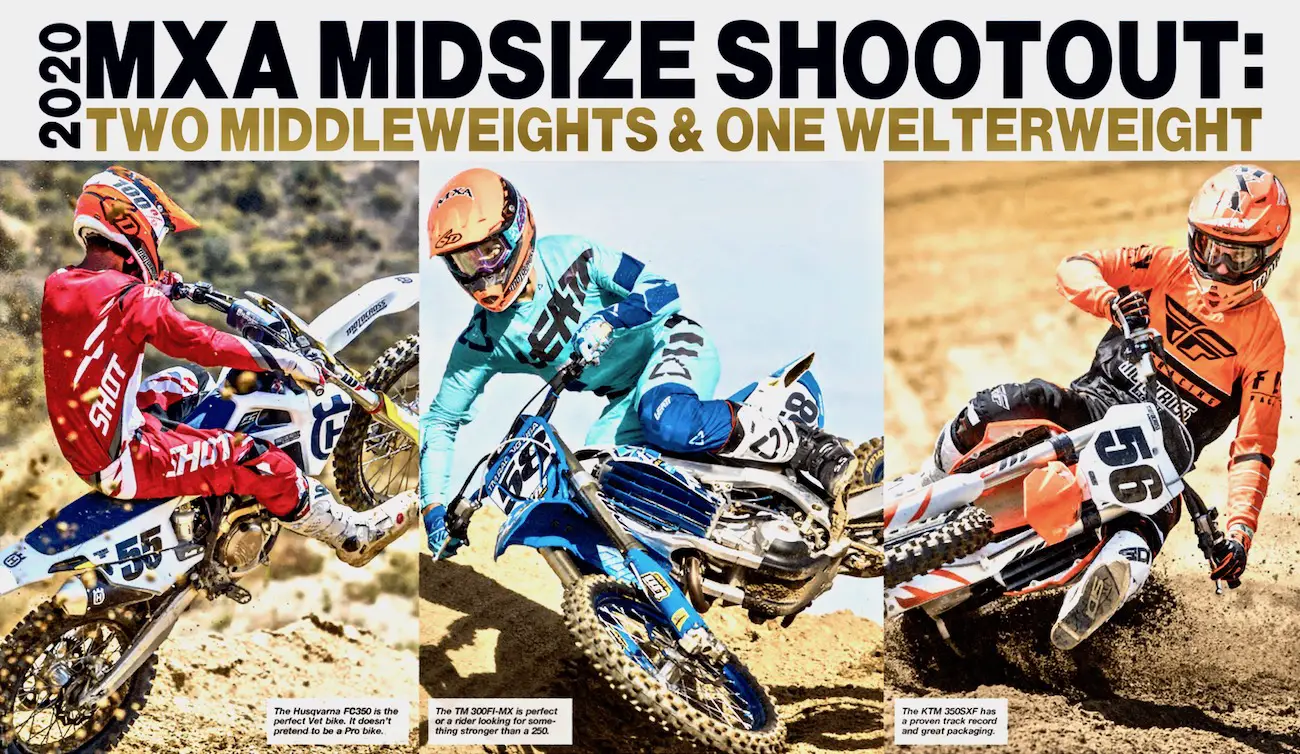

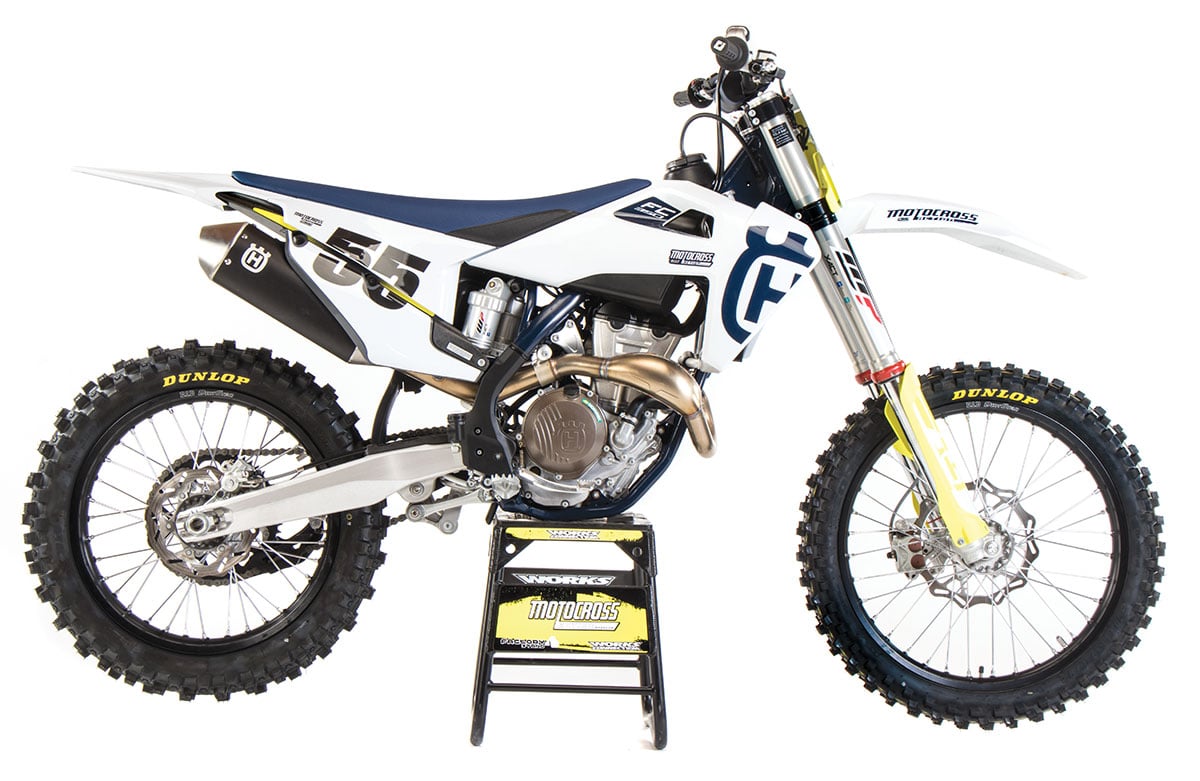
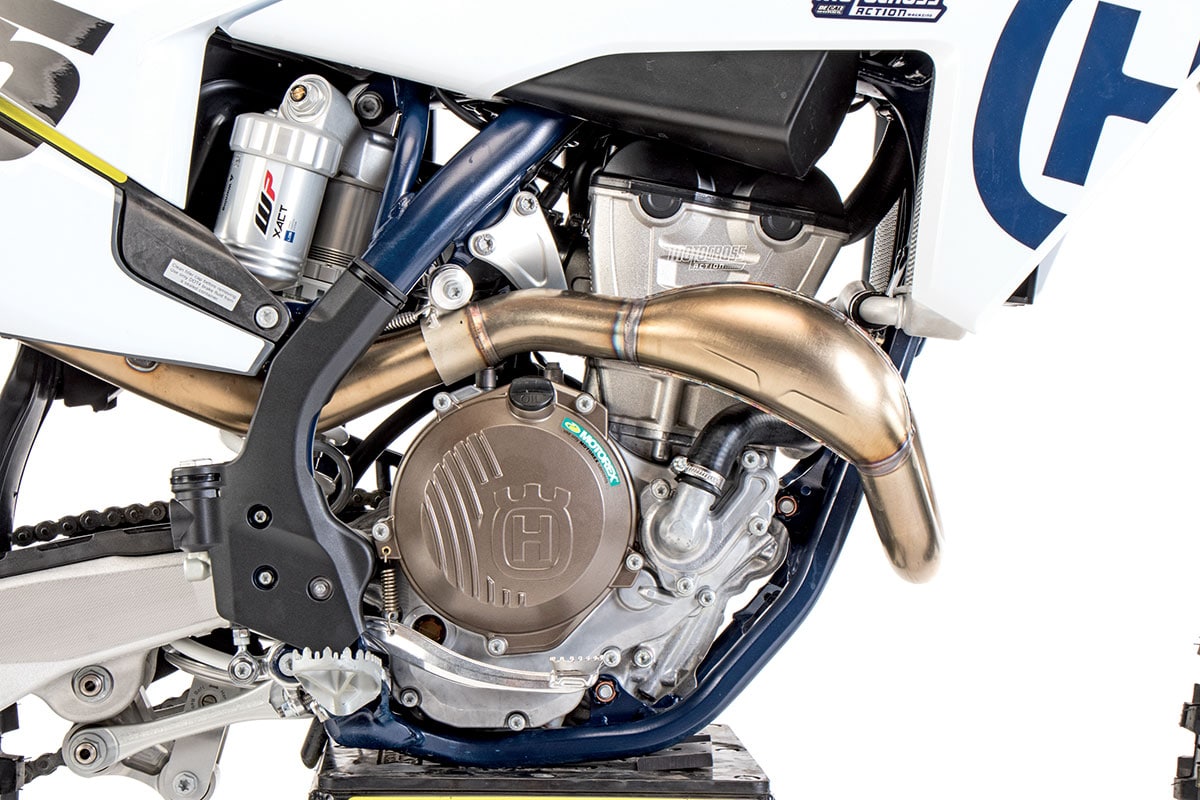

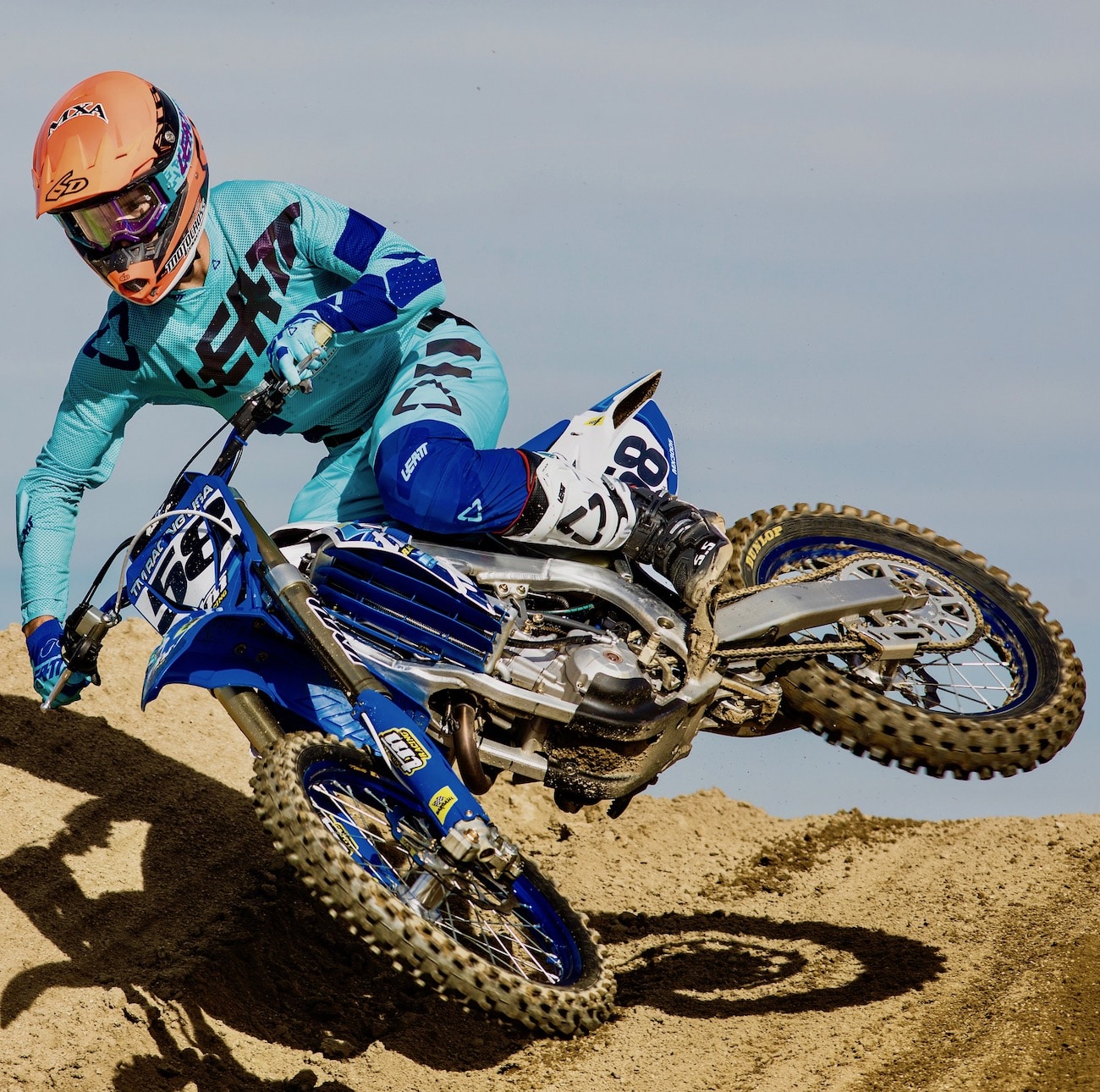
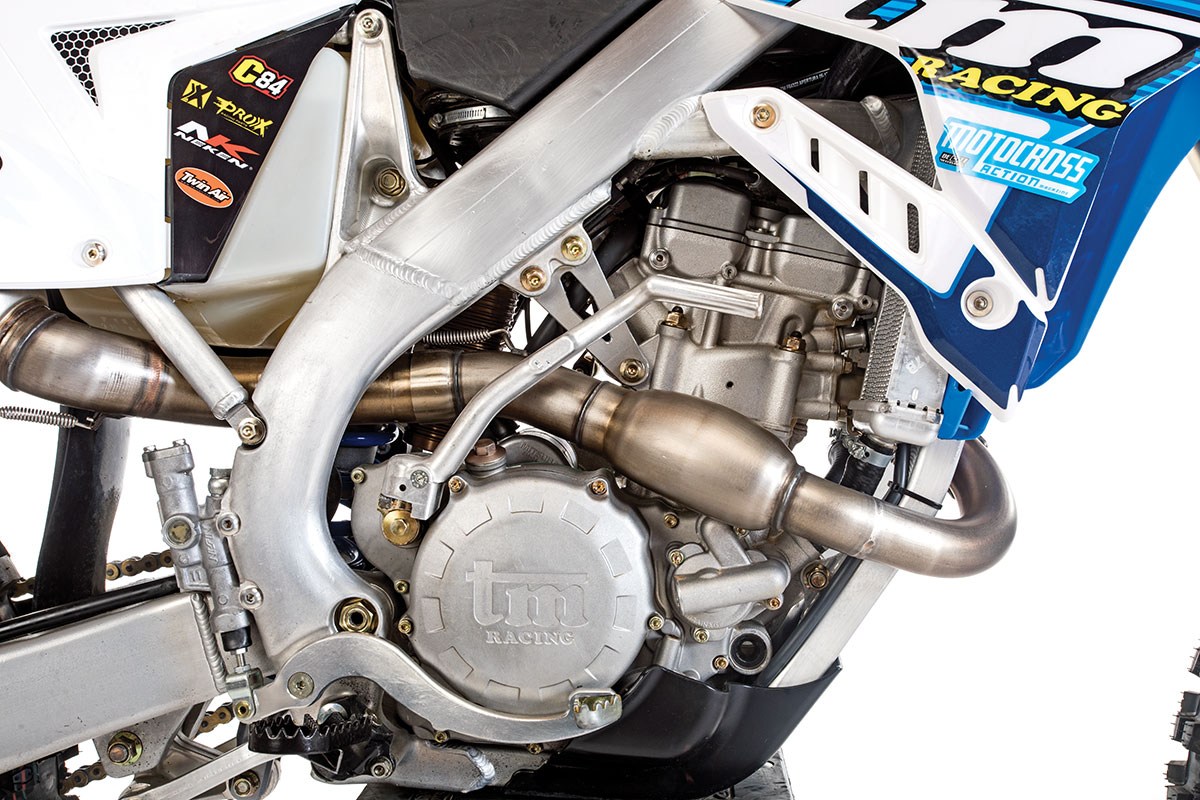



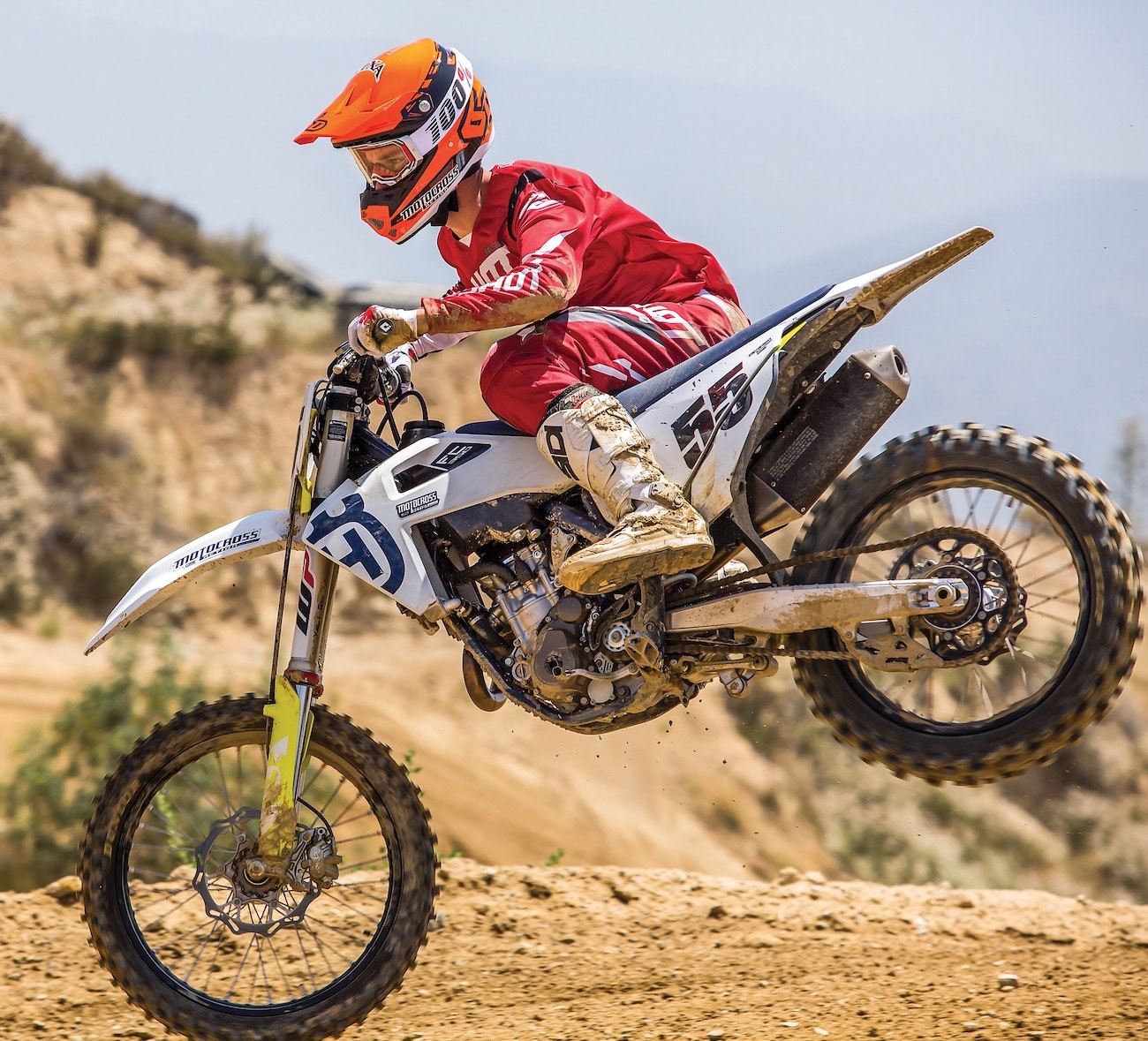
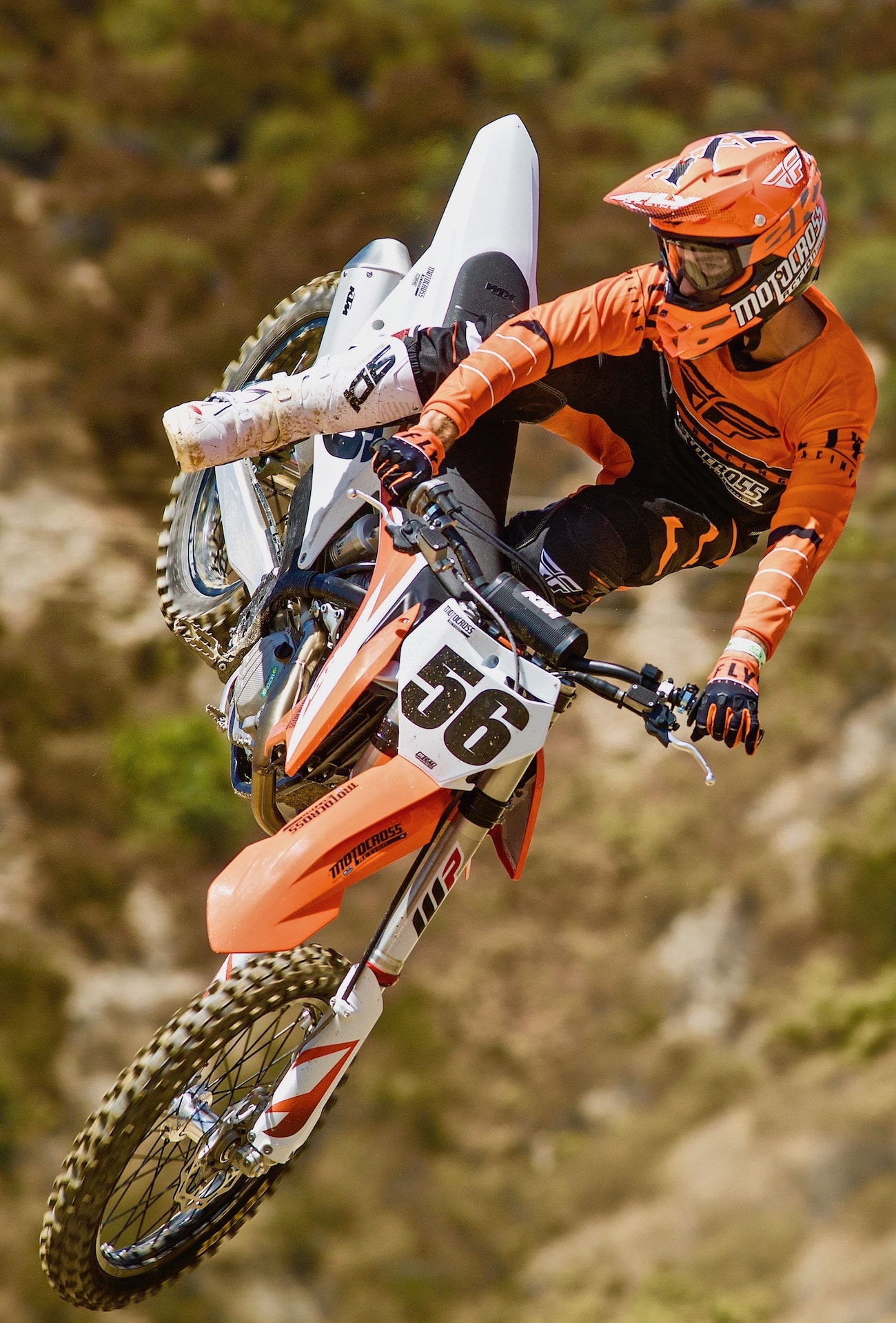


Comments are closed.